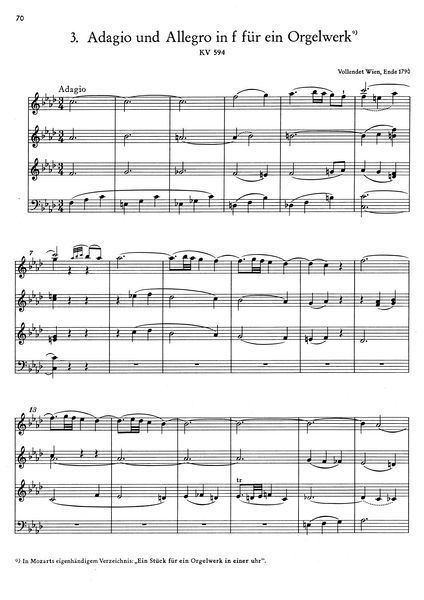 | ||
Adagio and Allegro in F minor for a mechanical organ, K. 594, is a composition by Wolfgang Amadeus Mozart, completed in late 1790. It was originally written as a funeral mass to be played on a mechanical organ clock for Field Marshal Gideon Baron of Laudon, but was later rededicated to Count Joseph Deym's Müllersche Kunstgalerie in Vienna.
Contents
Although he intended the piece to be played on a mechanical clockwork organ, he wished later that it could be played on a conventional organ. In a letter to his wife Constanze dated "3rd October, 1790", he wrote, "If it were on a large clock-work with a sound like an organ, I'd be glad to do it; but as it is a thing made up of tiny pipes only, which sound too shrill and childish for me". As time passed, Mozart seemed to be content with the decision, saying later that the work and its installation in the gallery in "fruitlessness and purity and compatibility to the works of art eclipses anything that anyone has ever succeeded in producing". The piece takes about twelve minutes to perform.
Movements
The piece has three movements.
Other Works for Mechanical Organ
In 1791 Mozart wrote another piece in F minor for mechanical organ, "Ein Orgel Stück für eine Uhr" (an organ piece for a clock), K.608. This composition is believed to have also been commissioned by Count Deym.
